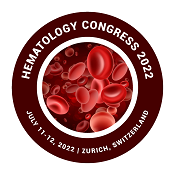
Austin Bigley
VP Director of Research and Development, Indapta, USA
Title: Utilizing the Superior Antibody-Dependent Cellular Cytotoxicity, Effector Functions, & Improved Persistence of g-NK Cells When Compared to Conventional NK cells
Biography
Biography: Austin Bigley
Abstract
Monoclonal antibodies (mAbs) are a central component of therapy for hematologic malignancies. Widely used mAb agents in multiple myeloma (MM) include daratumumab and elotuzumab. However, not all patients respond to these agents and resistance is a significant clinical issue. A recently discovered subset of human NK-cells lacking expression of FceR1g (“g-NK cells”) was found to have a multi-fold increase in antibody-dependent effector functions after CD16 crosslinking. In this study, we tested the capacity of g-NK cells to enhance efficacy of therapeutic mAbs against MM. In vitro, we found that that g-NK cells have strikingly superior anti-myeloma cytotoxicity compared to conventional NK-cells (cNK) when combined with daratumumab or elotuzumab (~6-fold, p<0.001). In addition, g-NK cells naturally expressed minimal surface CD38 and SLAMF7, reducing incidence of therapeutic “fratricide”. In tumor-naïve murine models, g-NK persistence in blood, spleen, and bone marrow was markedly improved (>90%) relative to cNK cells over 31 days (p<0.001). In vivo efficacy studies showed the combination of daratumumab and g-NK cells led to a >99% tumor reduction (by flow cytometry analysis) as compared to the combination of daratumumab and cNK cells (p<0.001). Moreover, treatment with daratumumab and g-NK cells led to complete elimination of myeloma burden in 5 of 7 mice. Collectively, these results underscore the unique ability of g-NK cells to potentiate the activity of therapeutic mAbs and overcome limitations of current “off-the-shelf” NK-cell therapies, without the need for cellular irradiation or genetic engineering.

